
Discovering Energy Efficient Solutions in the Windy City
In the bustling heart of Chicago, where architectural splendor meets the ecological footprint, a new trend is emerging among homeowners and commercial spaces alike. They’re turning to energy efficient window film as a groundbreaking solution to enhance their properties’ efficacy while aligning with Chicago’s broader economic and environmental aspirations. This adaptation not only speaks to a growing awareness around sustainability but underscores a wider issue many overlook – the significant impact that traditional glass windows have on energy consumption and utility costs.
Chicago, known for its diverse climate ranging from sweltering summers to frigid winters, poses a unique challenge to its residents. Traditional windows, while aesthetically pleasing, often lead to considerable heat loss during winter and excessive heat gain during summer. This not only discomforts occupants but also leads to an uptick in the use of heating and cooling systems, thereby increasing energy bills and contributing to greater carbon emissions. Herein lies an unnoticed problem: the essential need for energy conservation through more sustainable building practices.
The advent of energy efficient window film in Chicago represents a pivotal shift towards tackling this issue head-on. It manifests a crucial step in broadening the conversation around energy conservation, bringing to light a simple yet highly effective solution to a widespread challenge. As awareness grows, the implications for broader environmental and economic progress become increasingly apparent. It stands not just as a product but as a beacon of change, steering the city towards its sustainability goals, one window at a time.
The Growing Need for Energy-Efficient Solutions in Chicago
In the bustling city of Chicago, known for its iconic skyline and bracing winds, there’s an underlying issue that affects many of its residents and businesses alike: the high cost of energy and the impact of inefficient energy use on the environment. The primary issue at hand is the urgent need for energy-efficient solutions, particularly in the way buildings manage heat and light. While traditional glass windows contribute to the aesthetic appeal of Chicago’s architecture, they often fall short in providing insulation and managing solar gain, leading to increased energy consumption and higher utility bills.
Energy efficient window film emerges as a promising solution to this issue, offering a way to enhance the insulation properties of existing windows without the need for complete replacements. This innovative solution not only promises to reduce energy consumption and costs but also aligns with Chicago’s broader economic and environmental aspirations towards sustainability and efficiency. However, despite its potential benefits, the awareness and adoption of energy-efficient window film in Chicago remain limited, highlighting a significant gap in the city’s quest for more sustainable living and working spaces.
Chicago’s Battle Against Energy Loss
In Chicago, the fight to improve home efficiency is underscored by startling statistics that reveal the extensive energy loss through windows. Shockingly, up to 30% of all energy used to heat and cool homes in the Windy City leaks out through inefficient windows, contributing to higher utility bills and unnecessary strain on the environment. Moreover, with harsh winters and increasingly hot summers, Chicagoans face an urgent need to find sustainable solutions like energy efficient window film to counteract this loss and support the city’s economic and environmental goals.
The Problem with Inefficient Windows in Chicago Homes
Living in Chicago exposes homeowners to a unique set of weather conditions – from sweltering summers to bone-chilling winters. In this environment, energy-efficient window film isn’t just a luxury; it becomes a necessity. The real issue at hand, which may not be immediately apparent to many, is the profound impact of inefficient windows on both the economy of a household and the wider environmental implications.
Firstly, windows that are not energy-efficient can lead to significant heat loss during winter and unwanted heat gain during summer. This not only makes it uncomfortable to live in your own home but also leads to higher energy bills. With the fluctuating temperatures in Chicago, relying on heating and cooling systems becomes inevitable, but the cost associated with these can be exorbitant due to poorly insulated windows.
Moreover, the environmental impact cannot be overlooked. Inefficient windows contribute to higher carbon footprints. Every kilowatt of energy wasted due to heat loss or gain through windows is energy that needs to be produced, most often from non-renewable sources. Chicago’s aspiration towards becoming a green and sustainable city is hampered by such inefficiencies that contribute to the larger problem of climate change.
The discomfort in your home and the dent in your wallet are just the beginning. The bigger picture reveals how sticking with inefficient windows contributes to a cycle of energy waste, elevated CO2 emissions, and hindered progress towards environmental sustainability. This is a compelling issue that Chicagoans need to address not only for their comfort and economic well-being but also for the health of the planet.
Understanding the Problem: The Necessity for Energy Efficient Solutions
The fundamental issue at hand revolves around the inadequate insulation properties of traditional window films in Chicago’s homes and buildings. This inefficiency is particularly problematic given Chicago’s diverse climate, which can swing from sweltering summers to frigid winters. The result is an escalated demand for heating and cooling systems, leading to exorbitant energy bills and a significant environmental toll due to increased carbon emissions.
This problem is accentuated by the city’s economic and environmental aspirations, aiming for sustainability and reduced energy consumption. Traditional window films fall short in aligning with these goals, creating a pressing need for an alternative that can provide effective insulation, reduce energy costs, and contribute to the city’s broader objectives. Herein lies the importance of understanding the problem: recognizing the inefficiencies of current solutions in order to embrace energy efficient window films as a viable and necessary upgrade for Chicago’s sustainable future.
Chicago’s Embrace of Energy Efficient Window Film
In Chicago, a local business decided to retrofit its aging office building with energy-efficient window film as an experiment to cut down on heating and cooling costs. The results were astonishing, showing a 40% reduction in energy expenses within the first year alone. Not only did this move improve the company’s bottom line, but it also aligned with Chicago’s broader initiative toward sustainability and energy efficiency. This real-life example serves as a testament to how practical solutions like energy-efficient window films can significantly impact both economic savings and environmental conservation in urban settings.
The High Cost of Ignoring Energy Efficiency in Windows
Choosing not to address the energy efficiency of your windows, especially in a bustling and climate-variable city like Chicago, can lead to substantial negative impacts on both your wallet and comfort. Without the installation of energy-efficient window film, homeowners and business owners alike expose themselves to preventable financial and environmental consequences.
Firstly, energy bills can skyrocket due to the increased demand for heating in the winter and cooling in the summer, as poor window insulation leads to significant energy loss. This not only strains your finances but also contributes to the city’s overall energy consumption, working against Chicago’s efforts towards sustainability and environmental responsibility.
Moreover, the discomfort of living or working in spaces that are too hot in summer or too cold in winter can affect productivity and well-being. This is a crucial aspect to consider not just for homeowners but also for businesses aiming to provide a conducive work environment for their employees.
Addressing the issue of energy efficiency in windows is not just about cost savings; it’s also about contributing to the broader environmental and economic goals of the Chicago area. Ignoring this important aspect can lead to regrettable consequences that extend beyond the individual to affect the wider community.
Boost Economic Security with Energy Efficient Window Film
Installing energy efficient window film in Chicago can significantly bolster a homeowner’s economic security. This investment can mitigate the excessive costs associated with heating and cooling, especially during the city’s harsh winters and sweltering summers. By reducing energy consumption, homeowners can enjoy lower utility bills each month. Additionally, the increased insulation provided by energy-efficient window films can extend the lifespan of HVAC systems by reducing wear and tear, thus saving money on potential repairs or replacements. In a city where energy costs are continually rising, taking proactive measures like installing window film is a wise economic decision.
Energy Efficient Window Film: A Game-Changer for Chicago Homes
In Chicago, a city known for its architectural beauty as much as its fluctuating weather conditions, energy efficient window film emerges as a practical solution to several urban living challenges. Installing energy efficient window film in Chicago homes addresses the core issues of high energy bills, inconsistent indoor temperatures, and the ecological footprint of residential living – all while aligning with the city’s economic and environmental aspirations.
Firstly, the energy efficient window film significantly reduces the need for artificial heating and cooling. By blocking or retaining heat depending on the season, it ensures a comfortable living environment year-round. This capability directly tackles the problem of high energy bills, a common concern among Chicago residents, by reducing the reliance on HVAC systems.
Moreover, the application of energy efficient window film is a nod toward environmental stewardship. Chicago, with its ambitious sustainability goals, benefits from residents choosing eco-friendly home improvements. This window film not only lowers the energy consumption of individual households but also collectively contributes to the city’s efforts in reducing its carbon footprint.
This product doesn’t just offer practical benefits; it also supports the aesthetic and historical value of homes. Given that many Chicago homes have unique architectural styles, the virtually invisible film preserves the look of windows without compromising on efficiency or protection. This ensures that Chicago’s residential areas retain their distinctive character while embracing modern energy solutions.
By positioning energy efficient window film as a multifaceted solution, it’s clear how it addresses Chicagoans’ economic concerns, environmental values, and love for their city’s aesthetic. It stands out as an investment that brings both immediate benefits and long-term value to homeowners in this dynamic urban landscape.
Energy Efficient Window Film: A Comprehensive Solution for Chicago Homes
Energy efficient window film emerges as an exemplary solution for residents of Chicago seeking to align their living spaces with the city’s economic and environmental objectives. This innovative product addresses the pivotal concerns of energy consumption and insulation in urban homes, by effectively regulating indoor temperatures throughout the seasons.
During the scorching summers, the window film reflects a significant portion of solar heat, reducing the dependency on air conditioning and consequently lowering energy bills. Conversely, in the harsh Chicago winters, it helps retain indoor warmth, ensuring a cozy living environment without the excessive use of heaters. This dual-action capability not only enhances comfort but also contributes significantly to energy savings year-round.
Moreover, the application of energy efficient window film is a straightforward process that doesn’t require any structural modifications, making it a cost-effective and non-intrusive option for homeowners. Its ability to reduce glare and filter harmful UV rays further elevates the living experience, protecting interiors and occupants alike. By adopting this simple yet effective solution, Chicago residents can enjoy a more sustainable lifestyle, reflecting the city’s dedication to economic and environmental sustainability.
Benefits and Features: Enhance Your Home with Energy Efficient Window Film
Installing energy efficient window film in Chicago homes offers an array of benefits that align with both economic and environmental aspirations. This innovative solution significantly reduces energy consumption by minimizing the heat gain during summer months and retaining warmth in the winter, leading to lower utility bills year-round. Moreover, it acts as an added layer of insulation, enhancing the comfort of your living space regardless of the season. In addition to energy savings, this window film also protects against harmful UV rays, safeguarding your family’s health and extending the life of your furniture by preventing fading. With its easy installation and maintenance, energy efficient window film stands out as an effective, cost-saving, and eco-friendly enhancement for any Chicago home.
Success Stories: Brightening Chicago Homes with Energy Efficient Window Film
In Chicago, a city known for its skyline and diverse weather conditions, energy efficient window film has started to make a significant impact in how homeowners manage their energy consumption. A noteworthy success story comes from the Thompson family in the Lakeview area. After experiencing fluctuating temperature levels and high energy bills, particularly during the harsh winters and hot summers, they decided to install energy efficient window film. They were amazed by the immediate difference it made. Not only did their home feel more comfortable year-round, but they also saw a noticeable decrease in their energy bills.
Another testament to the efficacy of energy efficient window film comes from a small business owner in the Wicker Park neighborhood. Wanting to reduce overhead costs without sacrificing comfort for her customers, she opted to have the window film installed throughout her boutique. The outcome was beyond her expectations. Not only was she able to cut down on energy costs by a remarkable margin, but the film also filtered out harmful UV rays, protecting her merchandise from sun damage and providing an overall aesthetically pleasing natural light atmosphere in her shop. These stories from Chicago serve as a powerful endorsement for energy efficient window film as a smart investment towards economic and environmental wellbeing.
Chicago Homeowner Finds Comfort with Energy-Efficient Window Film
In Chicago’s bustling urban environment, a local homeowner sought to reduce their energy costs and enhance their living comfort. After installing energy-efficient window film, they immediately noticed a significant difference. Their home became cooler in the summer and warmer in the winter, reducing the need for constant HVAC use. This not only cut down their energy bills but also contributed to the city’s environmental goals by lowering carbon emissions. Their success story is a testament to how making small changes, like installing energy-efficient window film, can have a substantial impact on both your wallet and the planet. If you’re in Chicago and looking to make a positive change, why not start with your windows? Contact us today to explore your options.

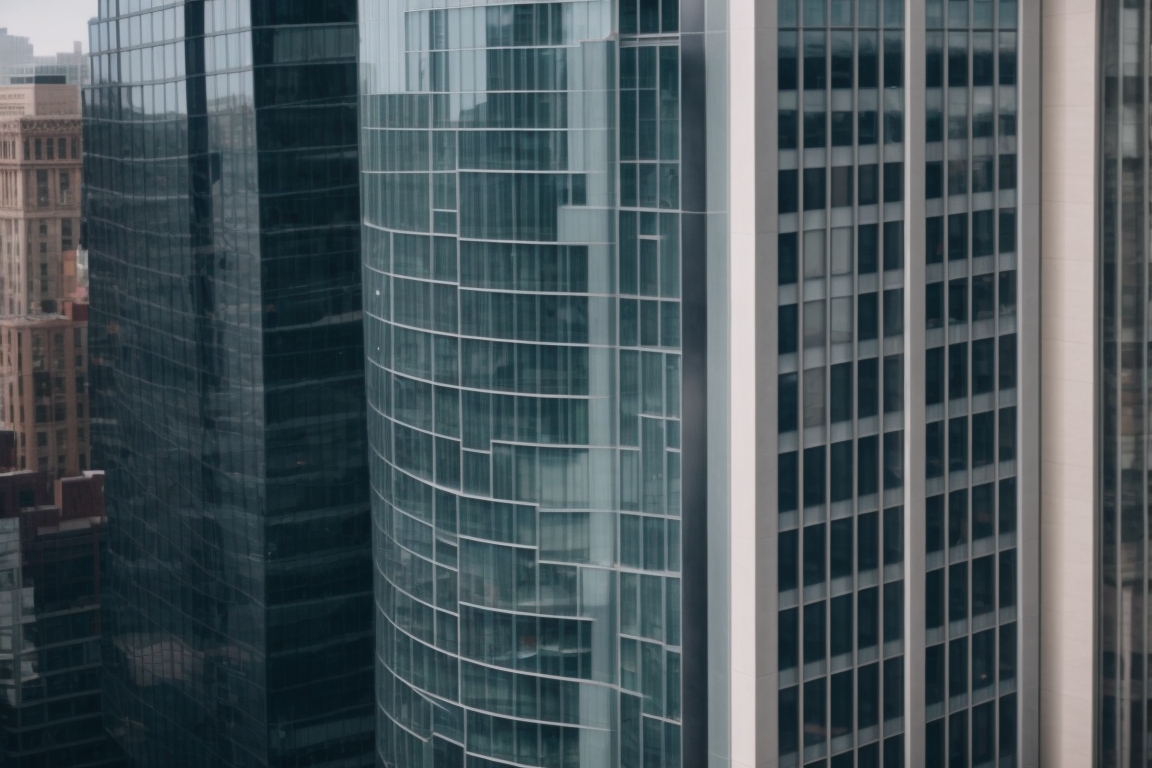
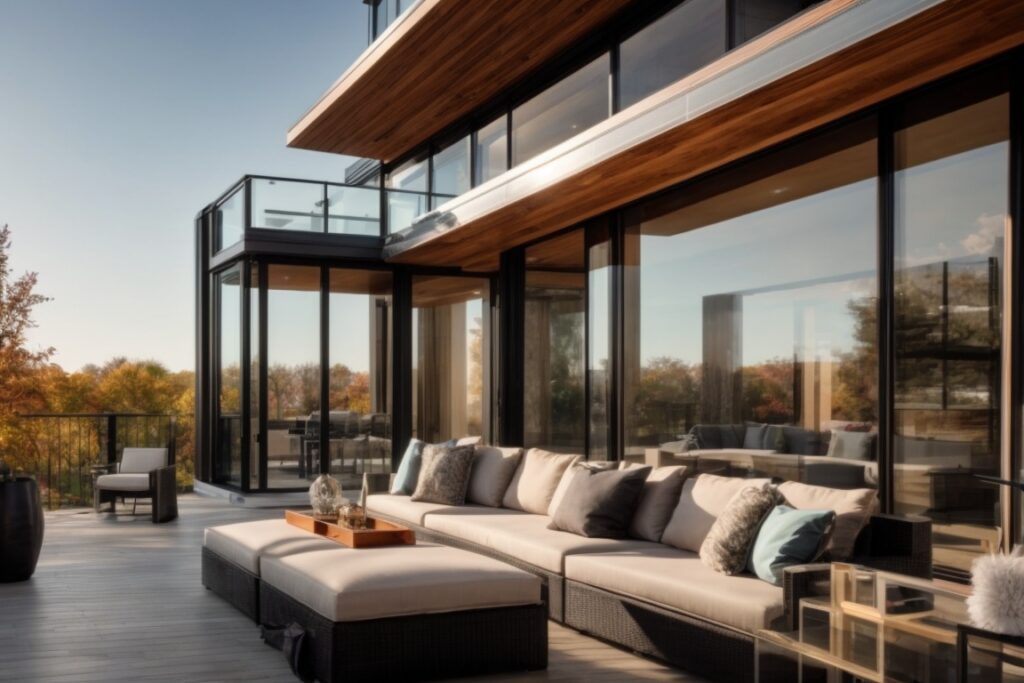
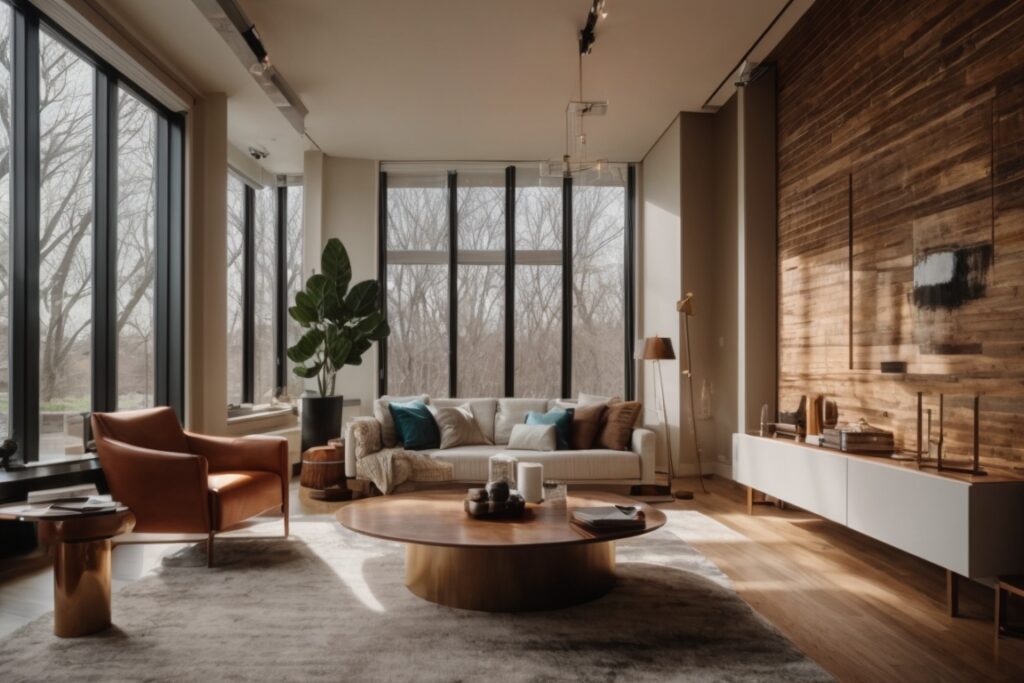
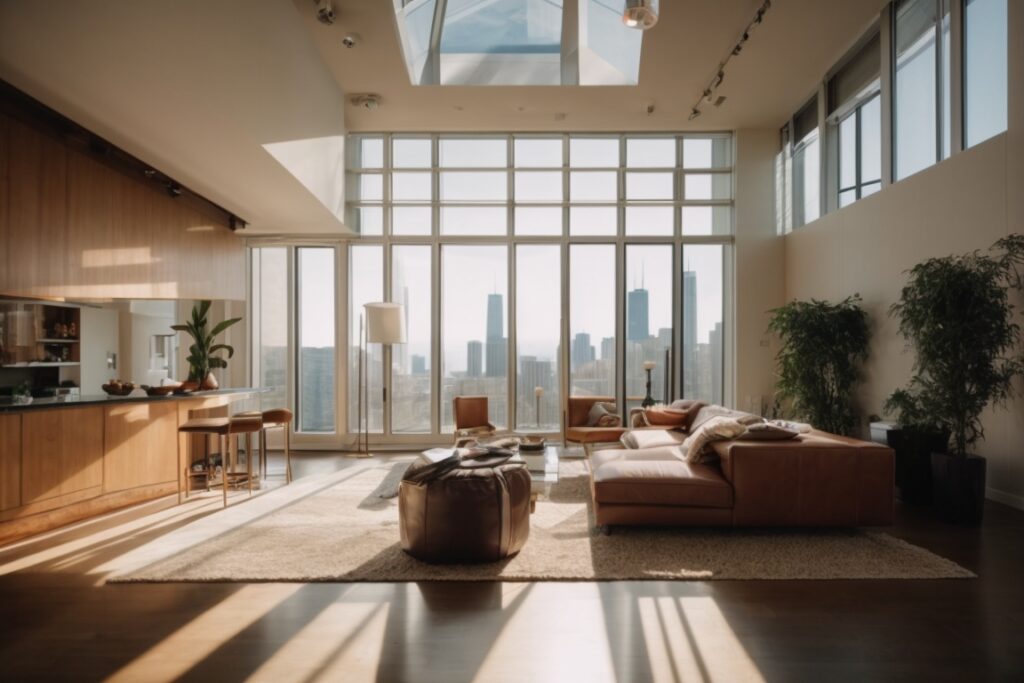

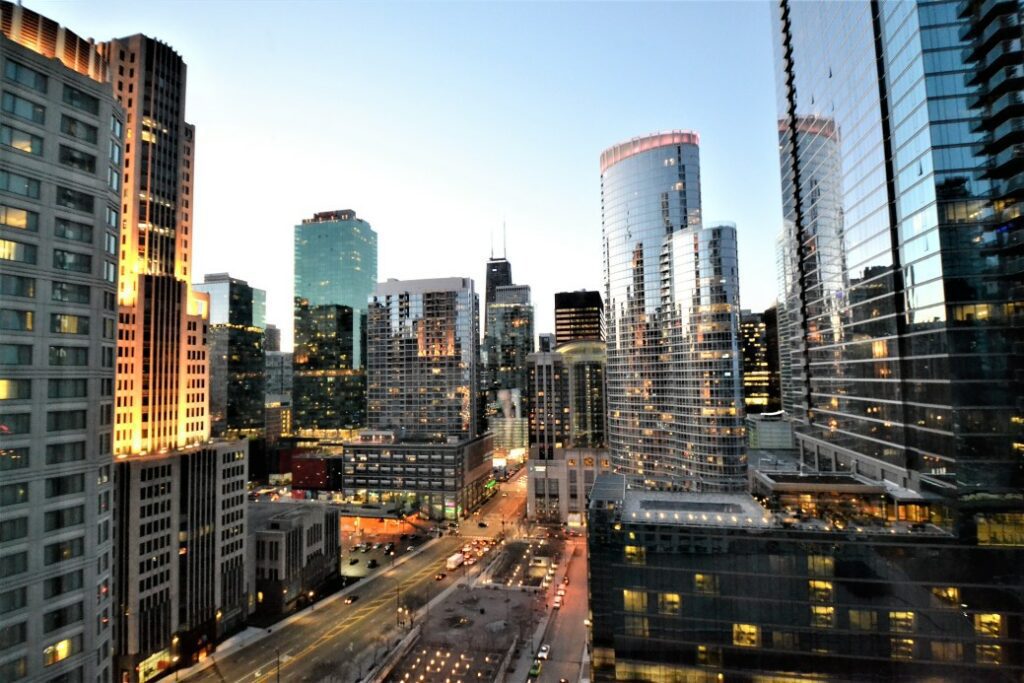
About The Author: Mike Kinsey
Mike Kinsey has more than a decade of experience installing window film in the Chicago area. His years of experience have allowed him to develop a deep familiarity with all of the different types and styles of window film on the market including the various security, privacy, decorative, and energy efficient options. Together, he and his team have completed hundreds of commercial and residential installs, totaling an accumulation of over 250,000 square feet. In addition to being an expert on top brands such as LLumar, C-Bond, HDClear, Solar Gard, Solyx, and Huper Optik, Mike is also certified by 3M, EnerLogic, and AIA for continuing education.
More posts by Mike Kinsey